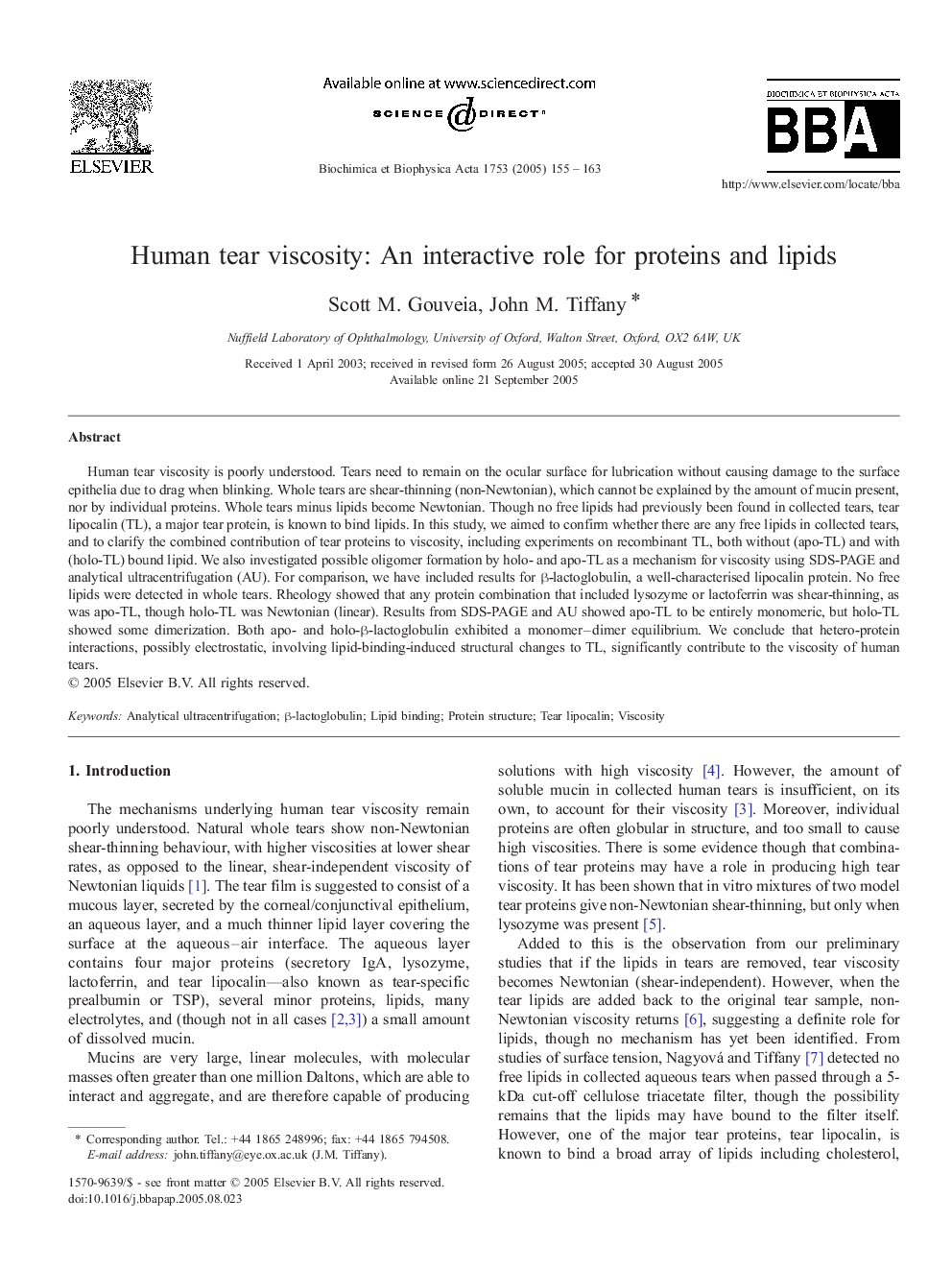| Article ID | Journal | Published Year | Pages | File Type |
|---|---|---|---|---|
| 10537915 | Biochimica et Biophysica Acta (BBA) - Proteins and Proteomics | 2005 | 9 Pages |
Abstract
Human tear viscosity is poorly understood. Tears need to remain on the ocular surface for lubrication without causing damage to the surface epithelia due to drag when blinking. Whole tears are shear-thinning (non-Newtonian), which cannot be explained by the amount of mucin present, nor by individual proteins. Whole tears minus lipids become Newtonian. Though no free lipids had previously been found in collected tears, tear lipocalin (TL), a major tear protein, is known to bind lipids. In this study, we aimed to confirm whether there are any free lipids in collected tears, and to clarify the combined contribution of tear proteins to viscosity, including experiments on recombinant TL, both without (apo-TL) and with (holo-TL) bound lipid. We also investigated possible oligomer formation by holo- and apo-TL as a mechanism for viscosity using SDS-PAGE and analytical ultracentrifugation (AU). For comparison, we have included results for β-lactoglobulin, a well-characterised lipocalin protein. No free lipids were detected in whole tears. Rheology showed that any protein combination that included lysozyme or lactoferrin was shear-thinning, as was apo-TL, though holo-TL was Newtonian (linear). Results from SDS-PAGE and AU showed apo-TL to be entirely monomeric, but holo-TL showed some dimerization. Both apo- and holo-β-lactoglobulin exhibited a monomer-dimer equilibrium. We conclude that hetero-protein interactions, possibly electrostatic, involving lipid-binding-induced structural changes to TL, significantly contribute to the viscosity of human tears.
Keywords
Related Topics
Physical Sciences and Engineering
Chemistry
Analytical Chemistry
Authors
Scott M. Gouveia, John M. Tiffany,
